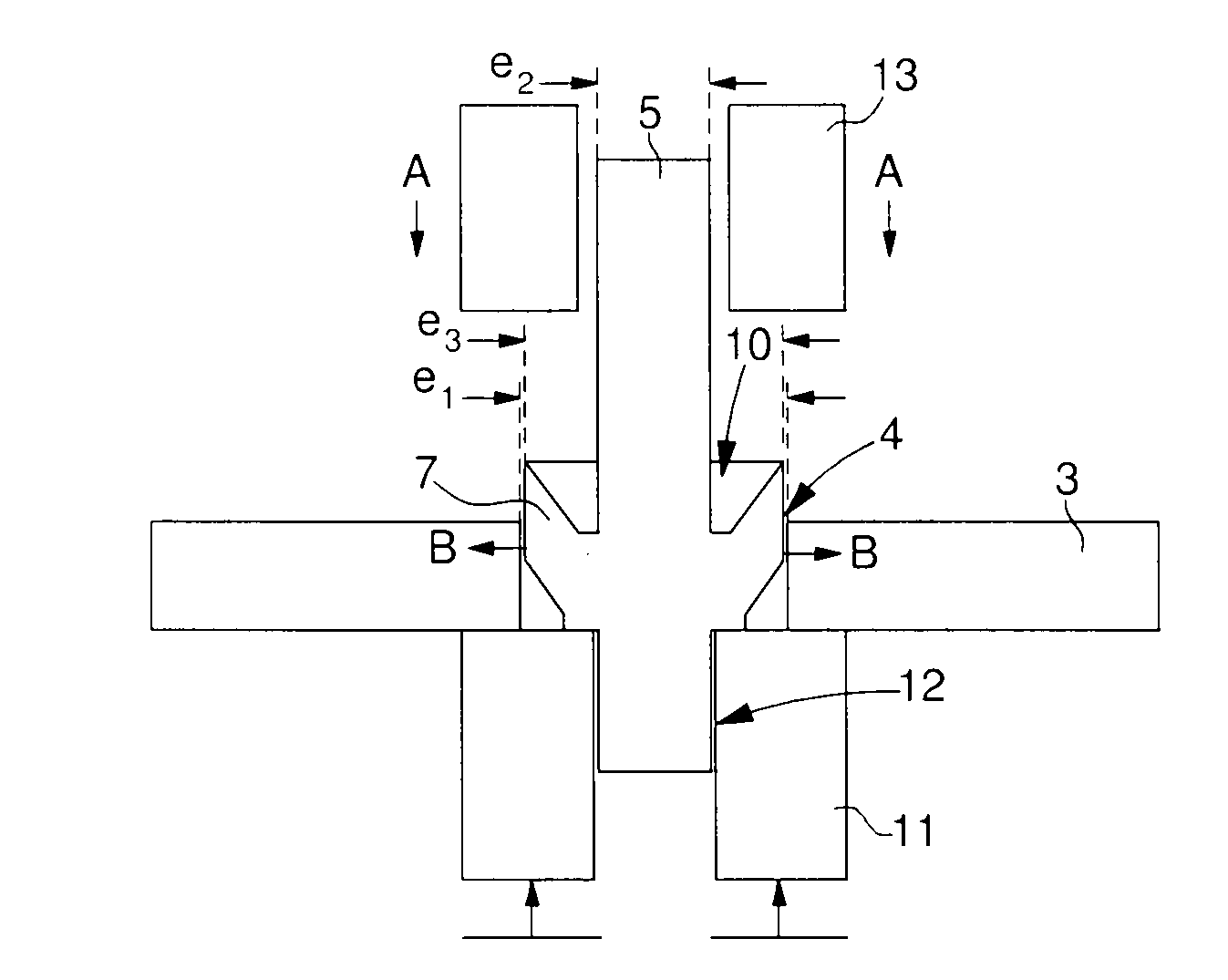Assembly of a part that has no plastic domain
a technology of plastic domain and assembly, applied in the field of assembly of parts, can solve the problems of silicon-based parts breaking, parts not binding sufficiently well, and operation requires extremely delicate applications
- Summary
- Abstract
- Description
- Claims
- Application Information
AI Technical Summary
Benefits of technology
Problems solved by technology
Method used
Image
Examples
first embodiment
[0048]FIGS. 1 to 4 show a first embodiment according to the invention. A first step thus consists in forming part 3 in a material having no plastic domain and with a circular aperture 4. As shown in FIG. 1, aperture 4 has a section e1, which is preferably comprised between 0.5 and 2 mm and if appropriate, flutes 1 of FIG. 11 projecting into aperture 4 have a height of between 5 and 25 μm.
[0049]This step may be achieved by dry or wet etching, for example DRIE (deep reactive ion etching).
[0050]Further, in a second step, the method consists in forming the member, which is a pivot pin 5 in the example of FIGS. 1 and 2, in a second material with a main section e2 and a radially flared portion 7, which is intended to be deformed, with a maximum section e3. Flared portion 7 may have a thickness of between 100 and 600 μm. As explained hereinbefore, the second step can be carried out in accordance with usual arbour fabrication processes. Member 5 is preferably metal and may for example be fo...
second embodiment
[0064]By way of example, FIGS. 5 to 6 illustrate the method. Thus, FIGS. 5 and 6 show an alternative in which member 15 is substantially different from member 5 in that it has a collar 16. Therefore, the bottom portion of tool 21 is altered and has a through hole 22 the section of which is at least equal to or greater than that of member 15.
[0065]It is therefore clear that member 5 is no longer carried by the radially flared portion 7 but is carried by collar 16 as is, if appropriate, part 3. Further, the deformation of flared portion 7 on the bottom portion thereof is no longer achieved directly using tool 21, but via collar 16, with no loss of advantage to the method. Thus, part 3 is under elastic stress at flared portion 7 and is locked against collar 16 of member 15.
[0066]By way of example, FIGS. 7 to 10 show a third embodiment of the method. Thus, FIGS. 7 to 10 show an alternative wherein the radially flared portion 27, 27′, 27″, 27′″ is substantially different from the flared ...
PUM
| Property | Measurement | Unit |
|---|---|---|
| Length | aaaaa | aaaaa |
| Displacement | aaaaa | aaaaa |
| Force | aaaaa | aaaaa |
Abstract
Description
Claims
Application Information
 Login to View More
Login to View More - R&D
- Intellectual Property
- Life Sciences
- Materials
- Tech Scout
- Unparalleled Data Quality
- Higher Quality Content
- 60% Fewer Hallucinations
Browse by: Latest US Patents, China's latest patents, Technical Efficacy Thesaurus, Application Domain, Technology Topic, Popular Technical Reports.
© 2025 PatSnap. All rights reserved.Legal|Privacy policy|Modern Slavery Act Transparency Statement|Sitemap|About US| Contact US: help@patsnap.com



